Bhutan, Nepal & the Mystical Himalayas
October 5-27, 2011
NEPAL - October 13-27, 2011
Page Ten - Chitwan National Park
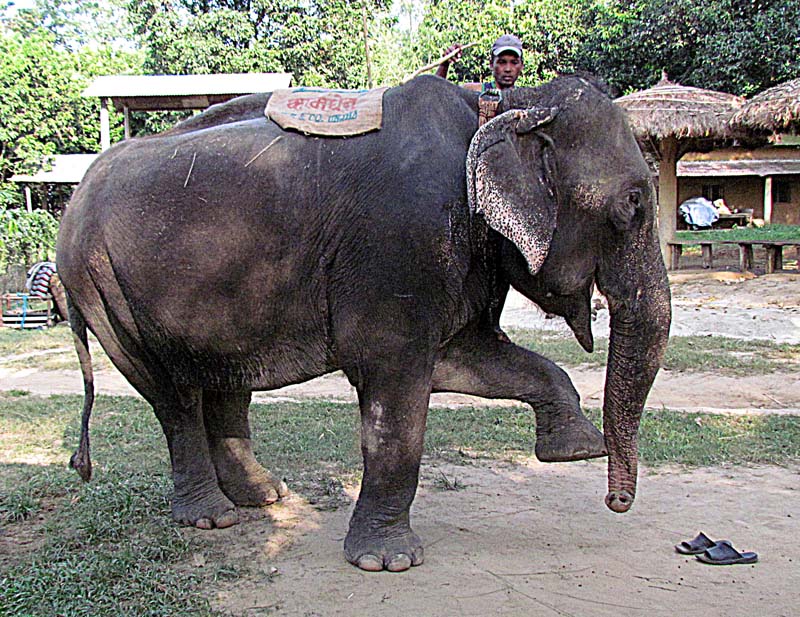
Southwest of Kathmandu near the border with India is Royal Chitwan National Park.
The lodge where we stayed on the edge of Chitwan National Park had several female elephants for tourists to ride on in the Park.
Here is the oldest one that I later rode on when we went looking for rhinoceros. Most of the elephants in the Chitwan
area are from India and were trained there. It takes about 2 years to train an elephant. They can be expected to work until they are
40 to 50 years old. Even elephants born in Nepal are sent to India to be trained.
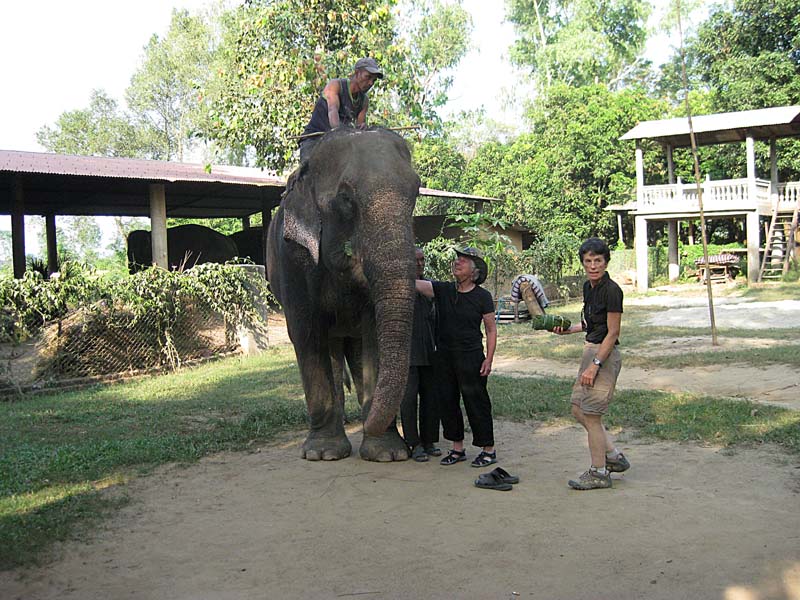
I'm heading over to feed the elephant, which is what June was also doing. Considering that I let an elephant give me a back massage
in Thailand several years ago (a really deep tissue massage), feeding the elephant seemed a lot safer this time around.
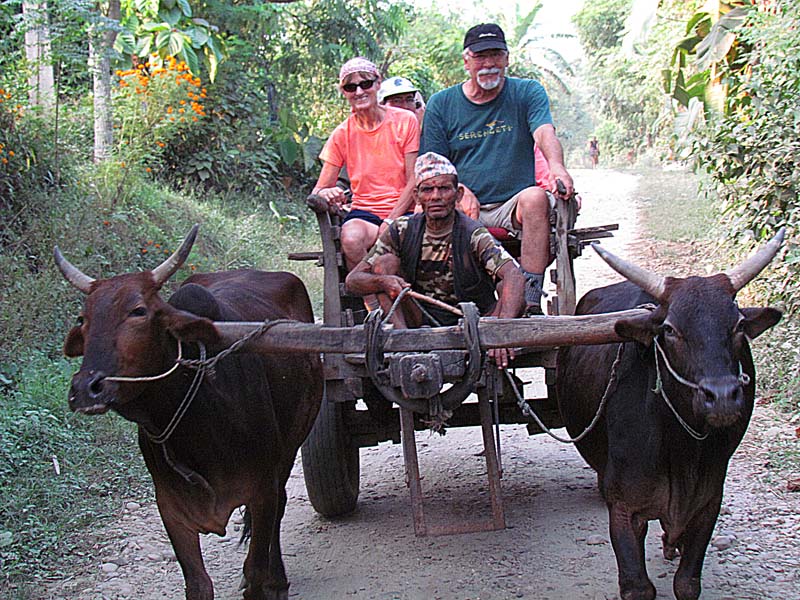
Kylee and Mick on an ox cart. We went by ox cart from our lodge to a nearby Tharu village. Until the late 1950s, the only
settlements in the Chitwan valley were scattered Tharu villages inhabited by people whose apparent immunity to malaria was rumored
to be the result of their heavy drinking.
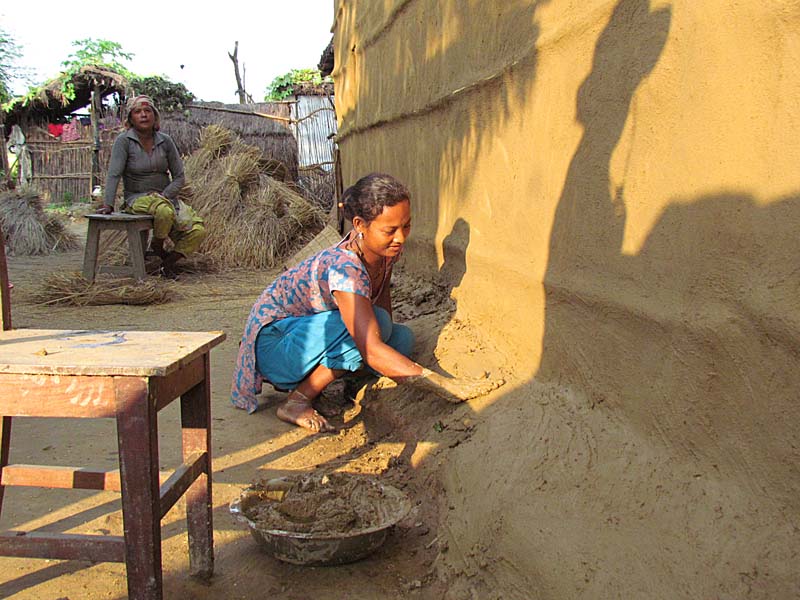
Tharu villages have homes with mud rendered walls and thatched roofs. The mud homes need to be redone annually.
Here a woman is working on her home.
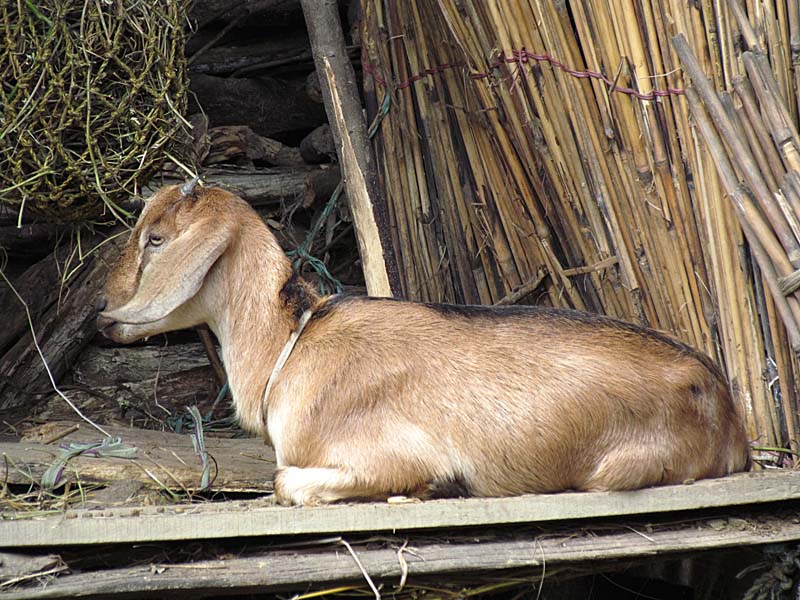
A goat awaiting his fate in Tharu village. Goats and other animals are ritually slaughtered and eaten during Hindu festivals.
Animal sacrifice is conducted in most goddess temples. The total number of
animals sacrificed annually in Nepal
is estimated to be a few hundred thousand. Sacrifice is a seen as a way of thanking the deity for good luck,
or asking her for fortune and prosperity. There are a number of organizations trying to stop this practice, but it still continues.
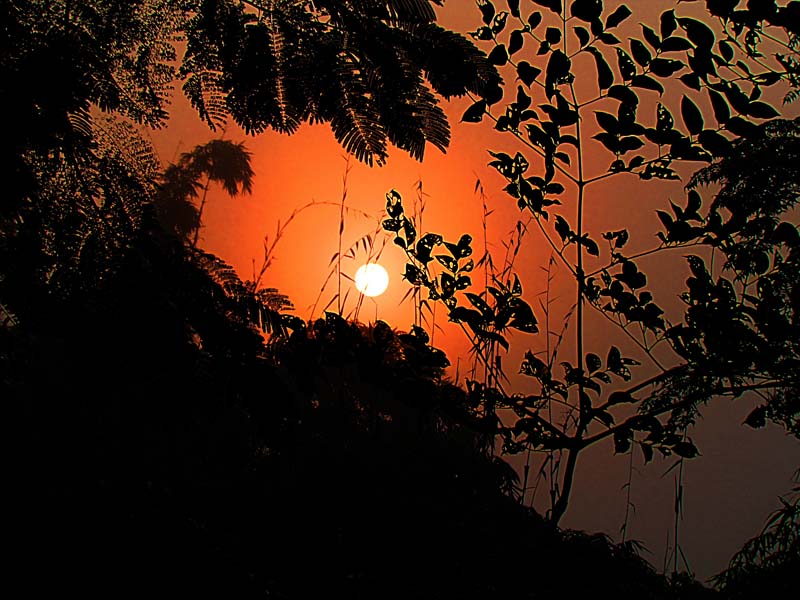
Sunset over Chitwan National Park. Photo taken from the veranda of our lodge outside the restaurant and along the Rapti River
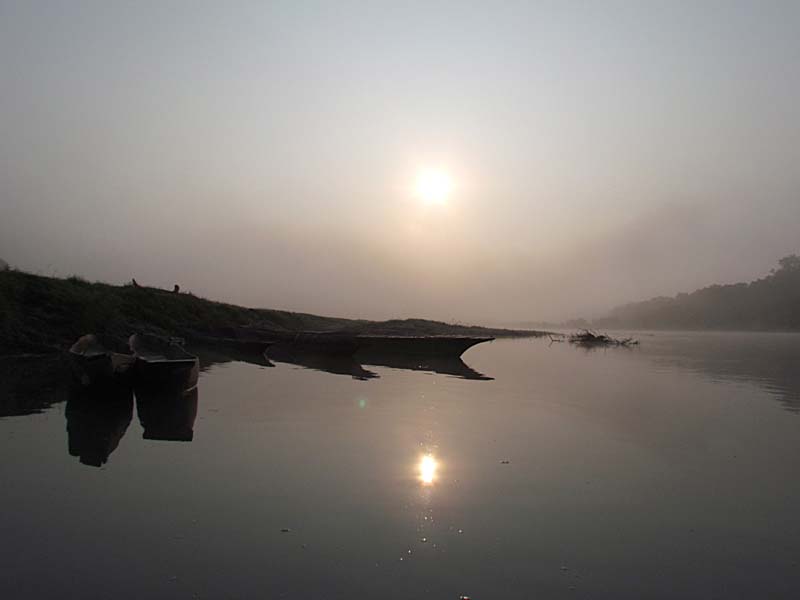
The Rapti River
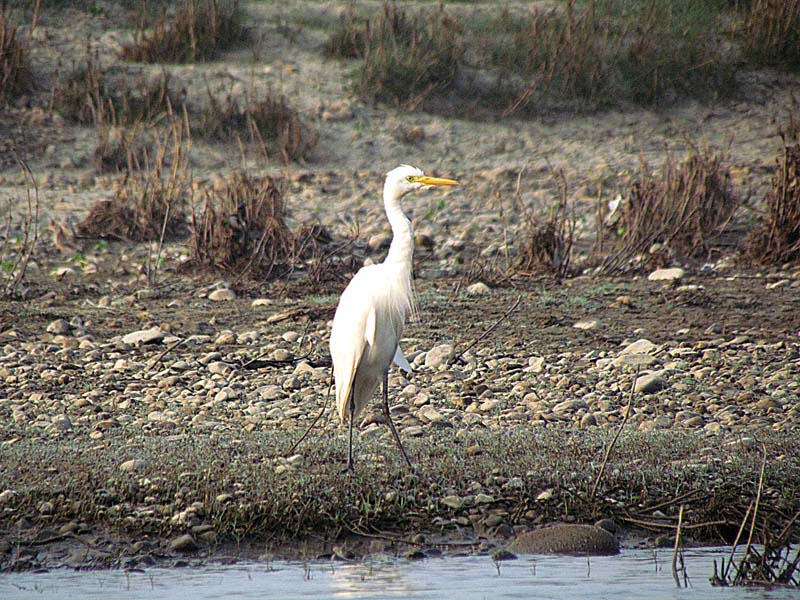
We went by dugout canoe along and across the Rapti River to visit a crocodile and turtle preserve.
Here is an egret.
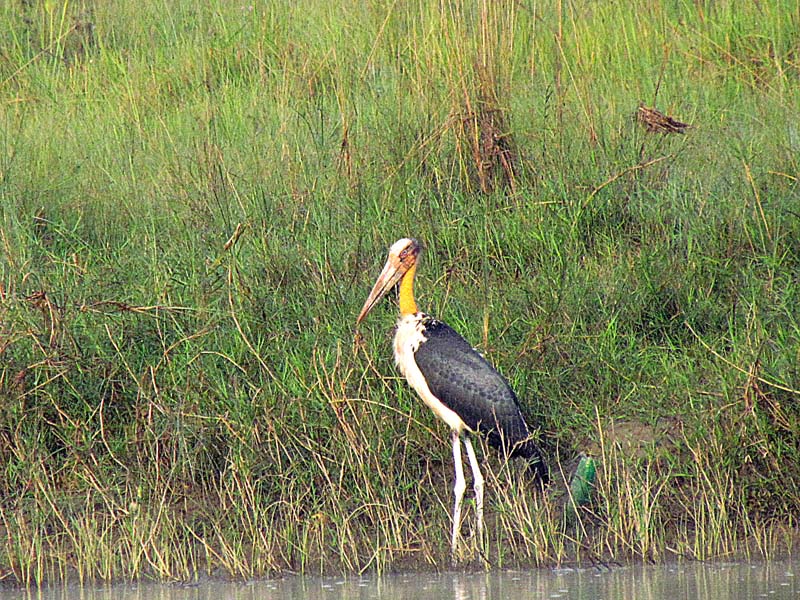
Marabou stork looking for food along the Rapti River
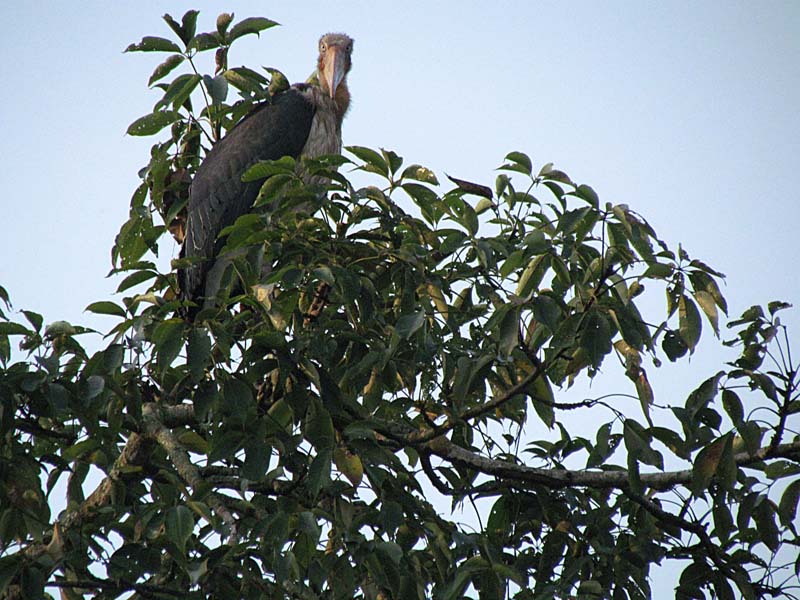
Stork peering at us from atop a tree.
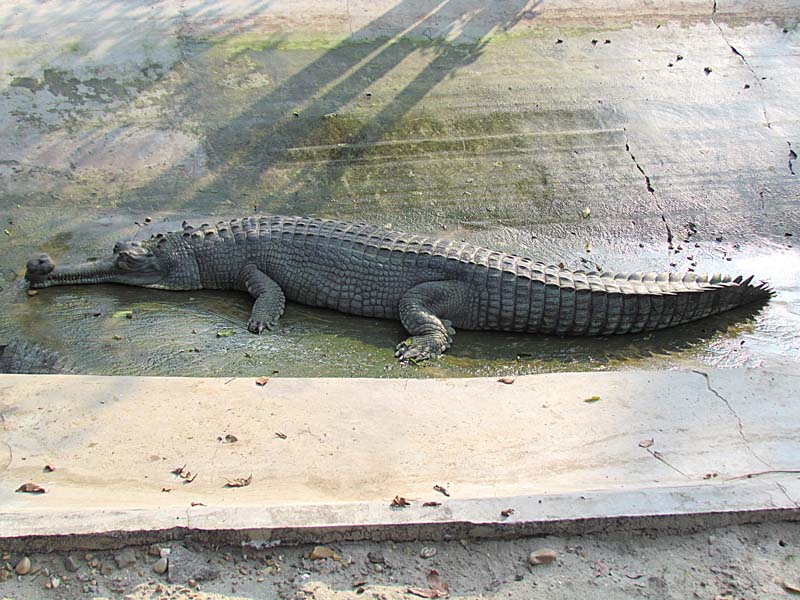
A gharial crocodile in a fenced-in area at the Crocodile Preserve. I climbed to the top of the fence to get a clear picture of this croc to
avoid the metal wires interfering with the photo. Mick from our tour group kept his hand on my back so that I would not fall backwards.
This
preserve had mugger and gharial crocodiles.
They are trying to breed the crocodiles, as they are threatened with extinction.
The average size of mature gharials is 11 to 15
feet, though males can attain a length of 20 feet.
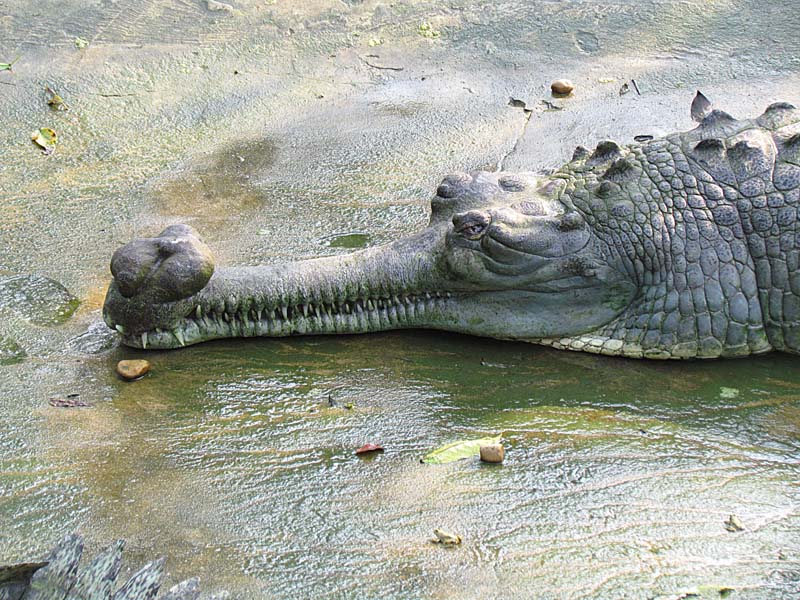
Closeup view of the head of the same crocodile from the previous photo.
The growth on the tip of a male’s snout is present in mature crocs and called a ghara. Males utilize the structure to modify and amplify
“hisses” snorted through the underlying nostrils. The resultant sound can be heard for 1/2 mile or more on a still day.
The ghara is thought to play an important role in gharial reproduction by identifying mature males to females
and as an instrument in courtship through auditory communication. Gharials used to live in all the major river systems of the Indian
subcontinent, but today they are in only 2% of their former area.
The World Wildlife Fund helped start this conservation facility in Chitwan.
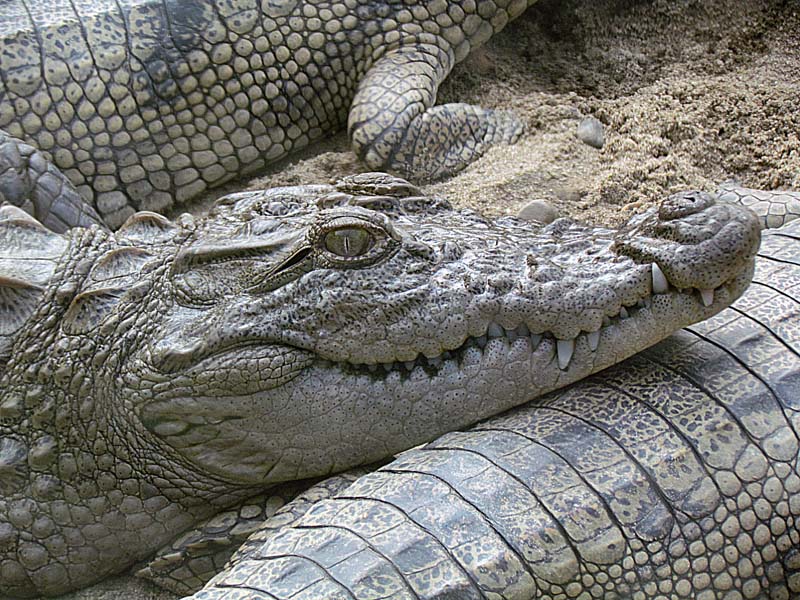
Looking at this guy, I felt like he was grinning and thinking, "I'd like to make you my next meal."
This is a mugger crocodile.
The name "mugger" is a variation of the Urdu word magar which means "water monster."
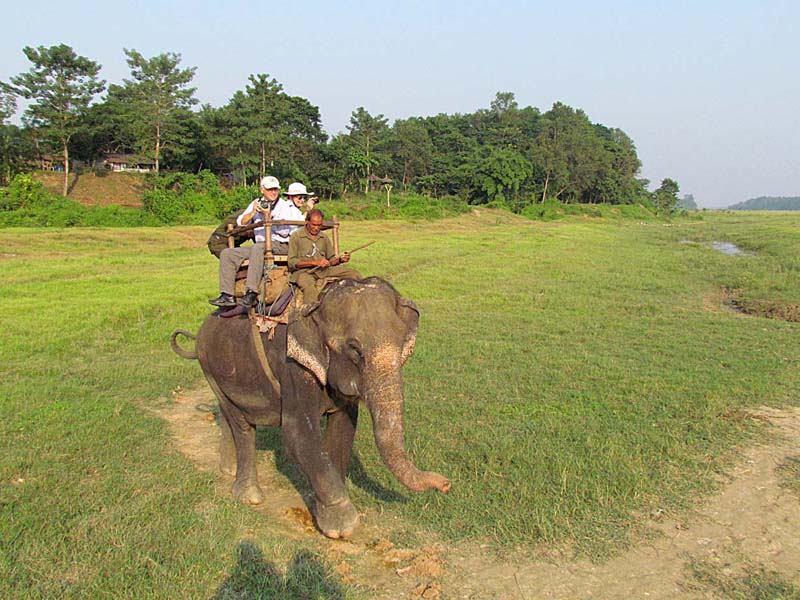
Leaving the lodge area on the back of elephants to go across the Rapti River on our elephant safari into the Chitwan National Park.
When we were on safari, the elephants were frequently pulling up clumps
of grass or other tasty vegetation to eat. Keeping an elephant
content requires a support team of 2 or 3 people. The elephant's rider or master, commonly called a mahout, is called a pahit in Nepal.
The pahit
comes from India with the elephant and stays for 3 years while a local pahit is trained. The local pahit then stays
with the elephant for life and is backed up by one or two assistants, whose main task is gathering
food to cater to the elephant's
enormous appetite.
The riding platform is called the howdah. The Asian elephant has 5 front toes and 4 rear toes.
The African elephant has 4 front toes and 3 rear toes.
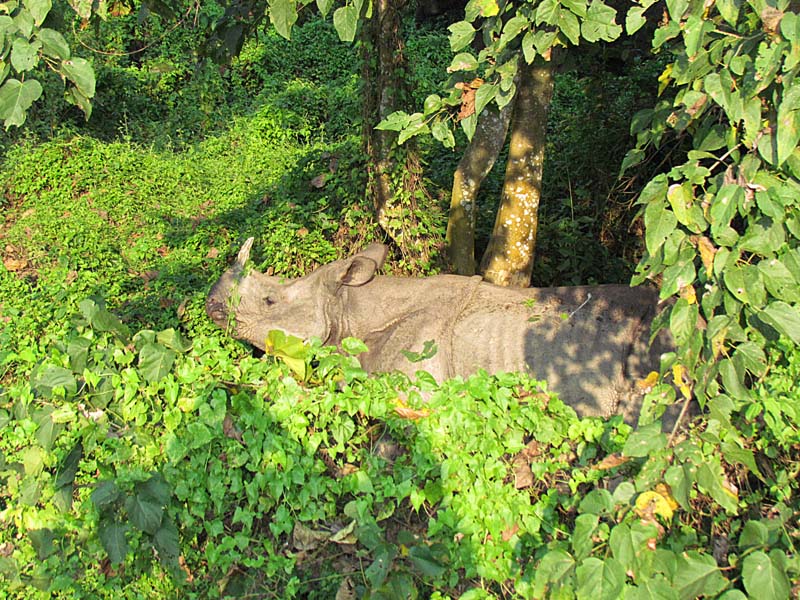
After crossing the river on the elephants, we saw our first rhinoceros amongst the trees and bushes. I had never been this close to a
rhinoceros before, except perhaps in a zoo. Royal Chitwan National Park is home to the only significant number of one-horned
rhinoceroses surviving in Nepal, and to other endangered species like the royal Bengal tiger and gharial crocodile. We did not see a tiger.
We did see monkeys, wild pigs, deer, and birds.
There are poisonous snakes, including cobras, but we did not see any.
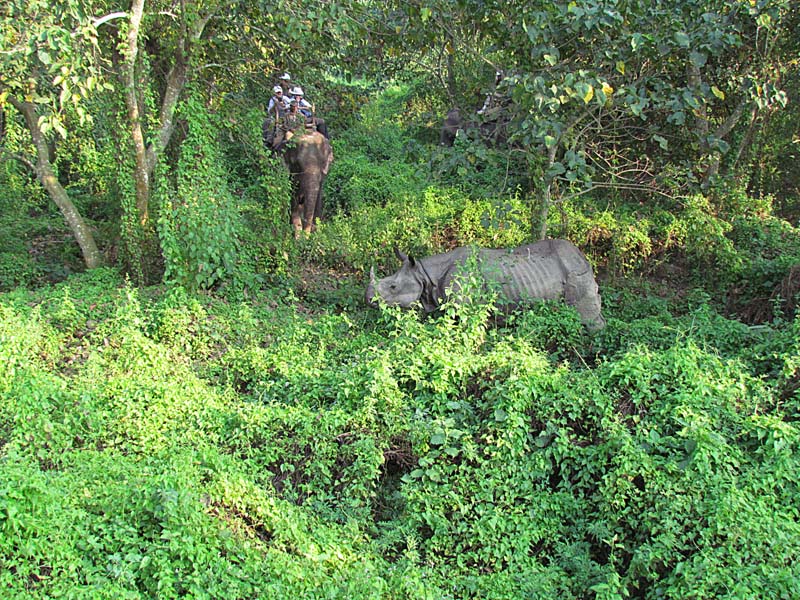
The elephants we were on surrounded the rhinoceros. I felt sorry for him and also grateful that he evidently did not think charging one
of the elephants would be a good idea. The one-horned rhino found here are larger than the African black rhino but smaller than the
African white rhino. A fully grown one can weigh 2 tons. They are generally solitary, but several may occupy the same area. Their diet
is mainly grass, and they have very poor eyesight, but their senses of smell and hearing are good.
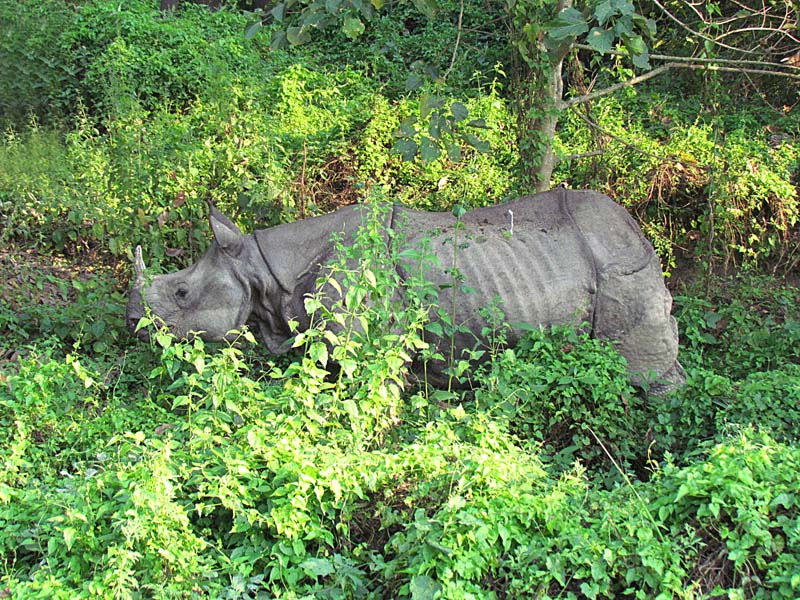
Nepali and British aristocrats from the 19th century on went on hunting trips in the Chitwan valley. King George V and his son the Prince
of Wales, later King Edward VIII, during one safari in the Chitwan forests in 1911, slaughtered 39 tigers and 18 rhinos.
After malaria was largely controlled, people from the hills came to this flat area to farm it. As
their habitat disappeared, so did
the tigers and rhinos. This decline was halted when a sanctuary was established in 1964, when 22,000 people were forcibly
removed from within the sanctuary area. The national park was established in 1973. Since that time, the animal population
has rebounded. This area in Nepal is called the Terai, which is a hot subtropical plain. Nearly half of the country's population
lives on this narrow strip of flat and fertile land that lies between the Indian border and the snow-clad mountains.
The most famous person
from Terai is Siddhartha Gautama, Buddha, who was born in 563 BC.
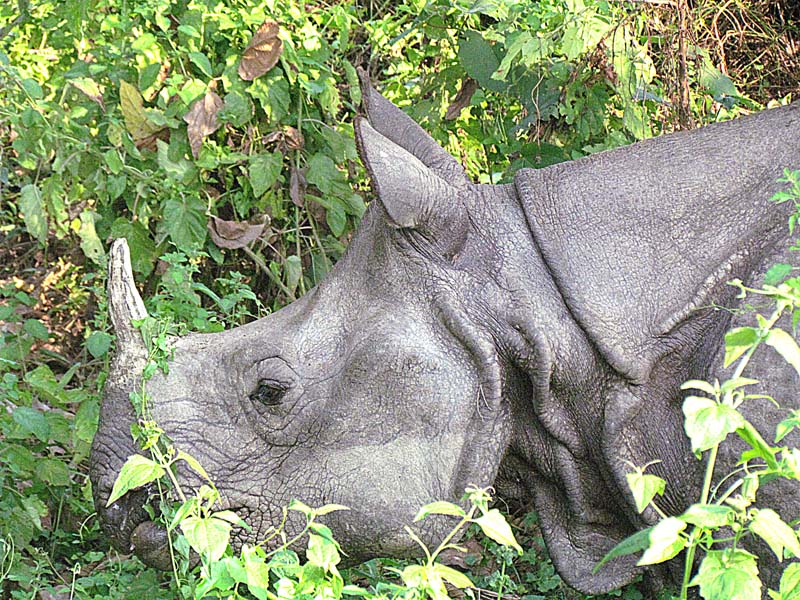
Zooming in on the rhinoceros head with my camera
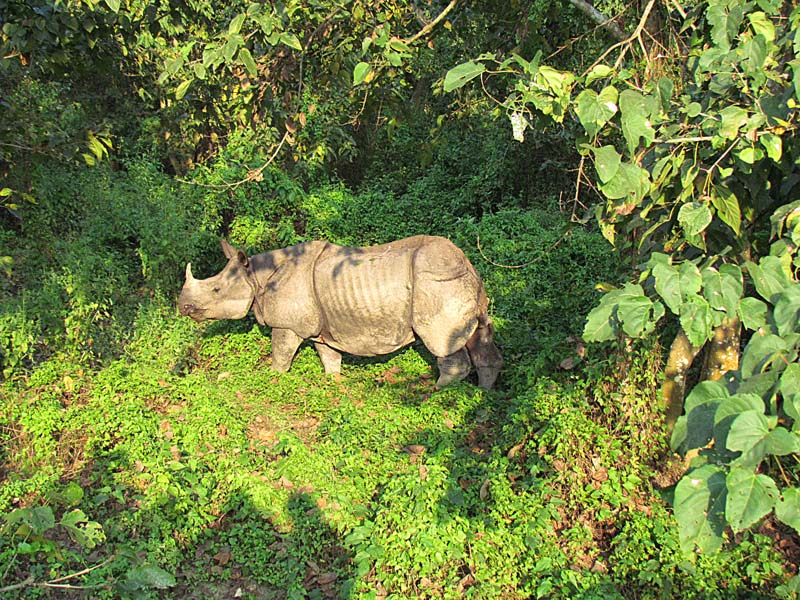
Same rhinoceros a few minutes later in a different location and light
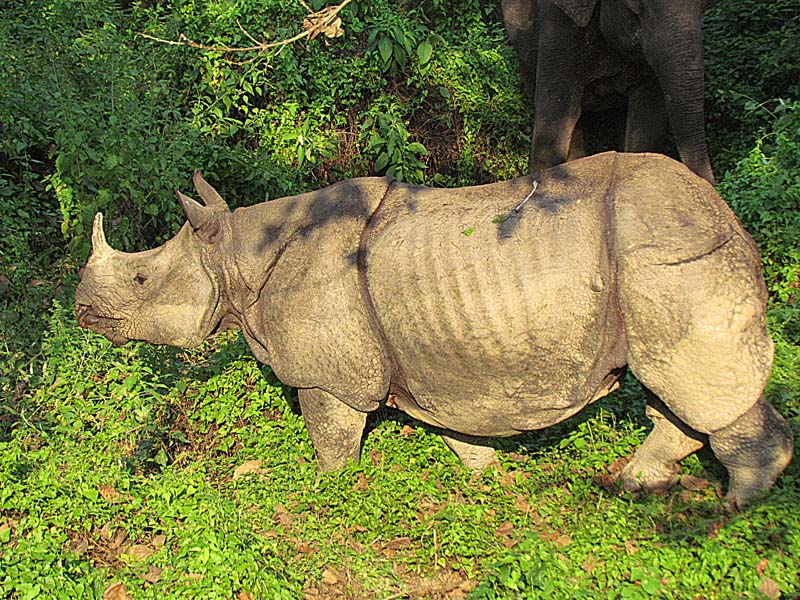
Later during our elephant ride we saw a mother and baby rhino, and heading back across the river to the lodge, we saw an elderly
rhinoceros in the river.
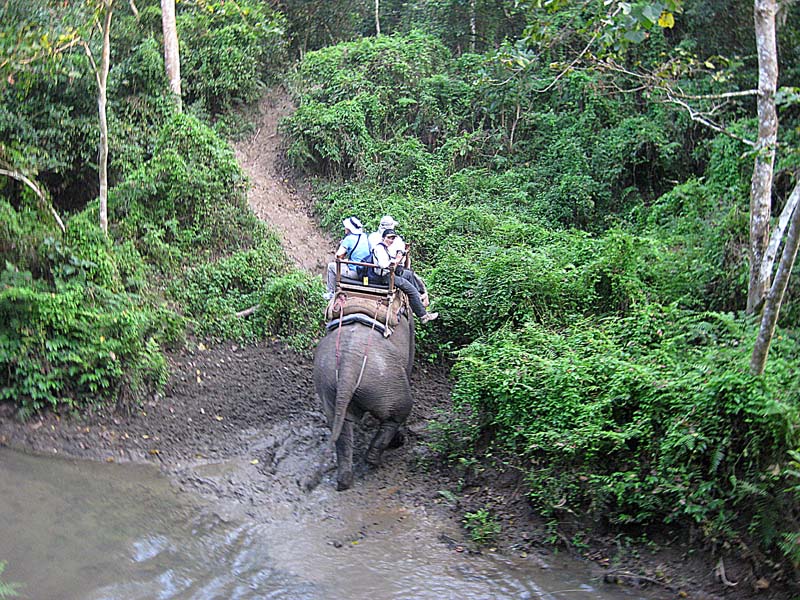
Here we had just crossed a muddy stream. I'm on the elephant on the right wearing a cap. Gunilla and John from California were
also on the little seating platform on the elephant's back, a tight fit. The elephant pahit sat in front of John on the elephant's neck. He
had a long stick that he used to try to hold back tree limbs and bushes so they wouldn't hit us as we passed through this forest. What
this really meant was that John was protected from the tree limbs, but I was smacked a few times and did a lot of ducking.
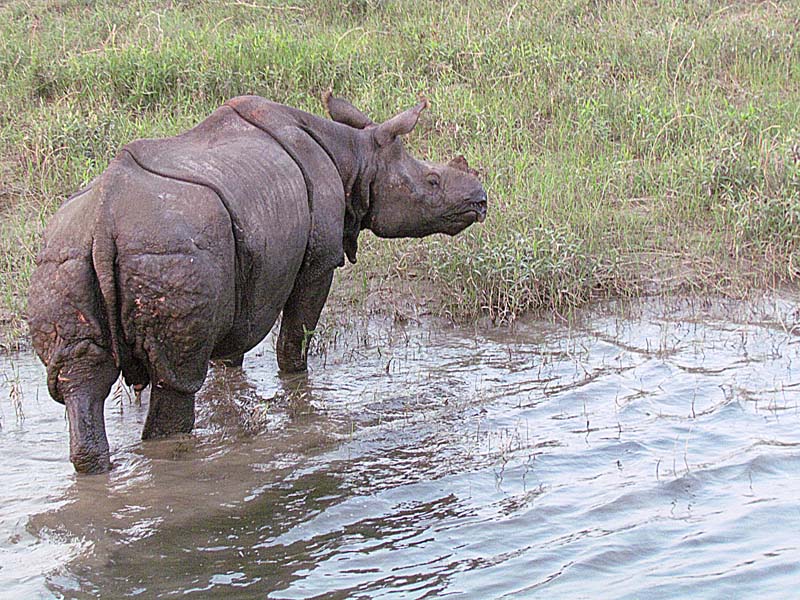
Old rhinoceros in the Rapti River that has lost most of his horn. He didn't seem to pay much attention to us. I guess he'd seen tourists
for many years.
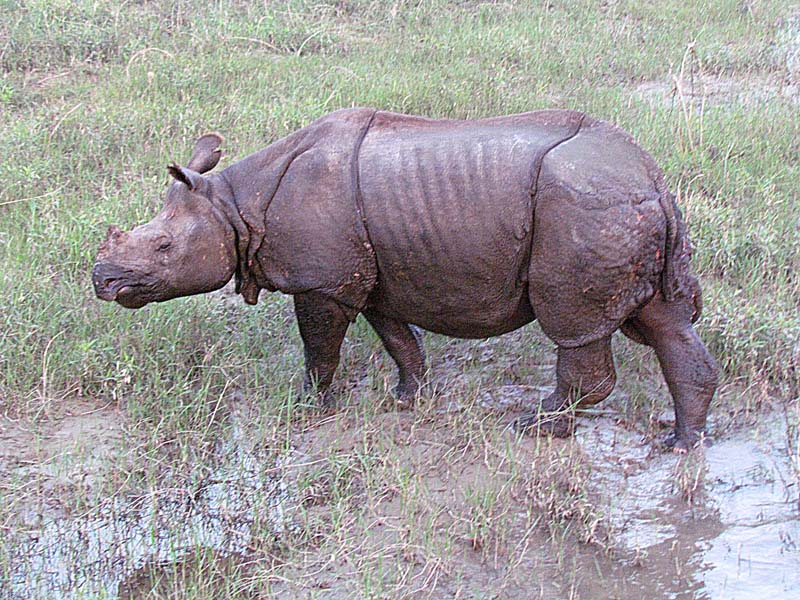
Here's the old guy after after getting out of the river. He was possibly planning to wander out to wreak havoc
on the rice crops in the area.
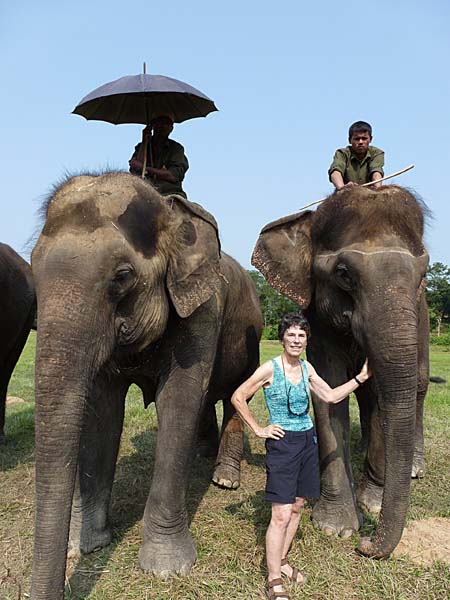
Posing with a couple of elephants near the Rapti River shoreline. Those of us who were willing to be washed by the elephants
(not too many
of us) put on swimsuits and the rest of the tour group watched.
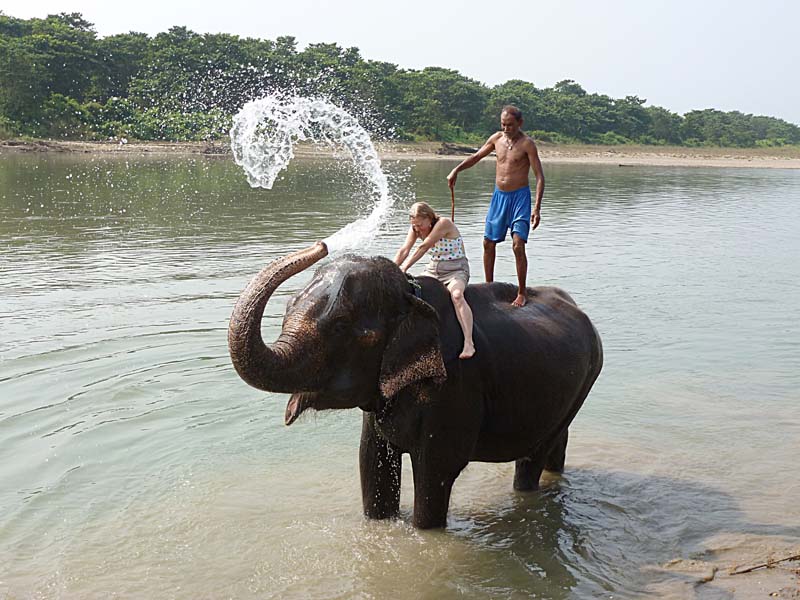
Janelle from North Carolina getting washed by an elephant
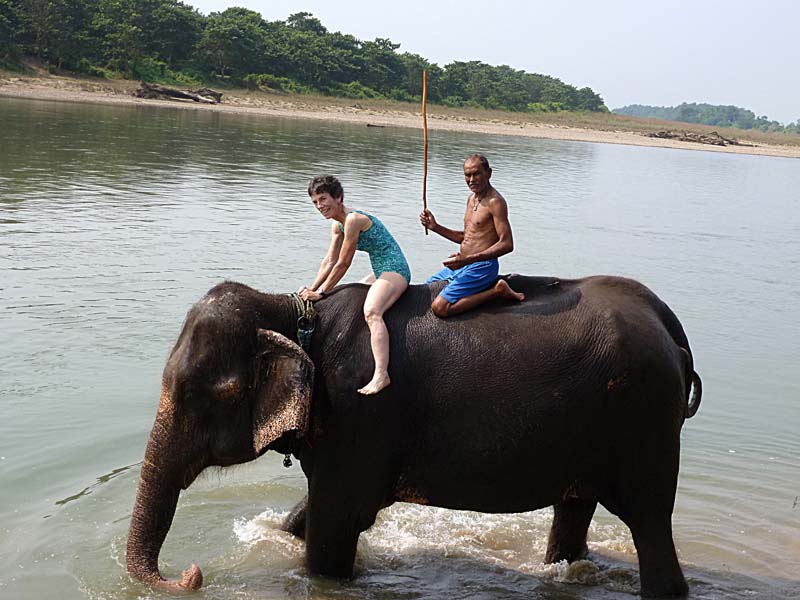
I was told to hold on to the ropes around the elephant's neck as we waded out into the river for my bath.
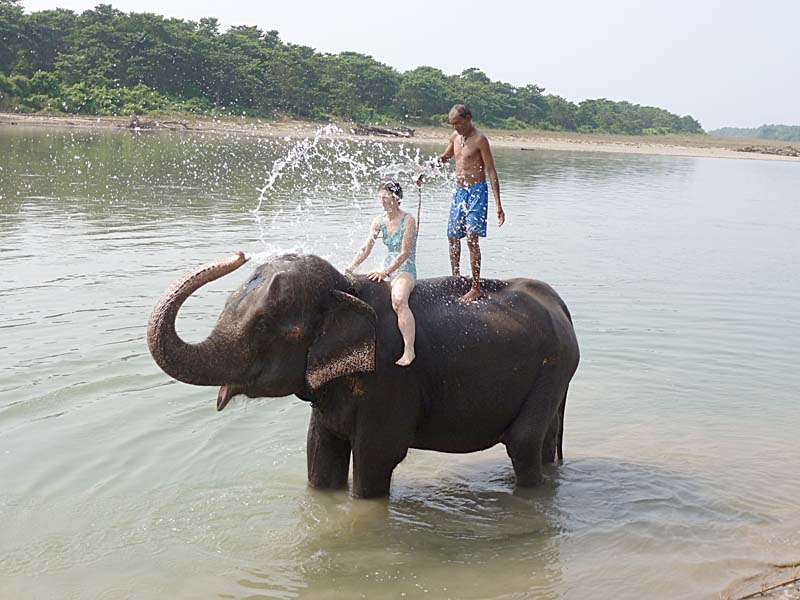
Getting doused. My elephant really seemed to enjoy spraying the water on me and kept doing it until we reached the shoreline.
I kept my eyes and mouth closed whenever I sensed the water was coming.
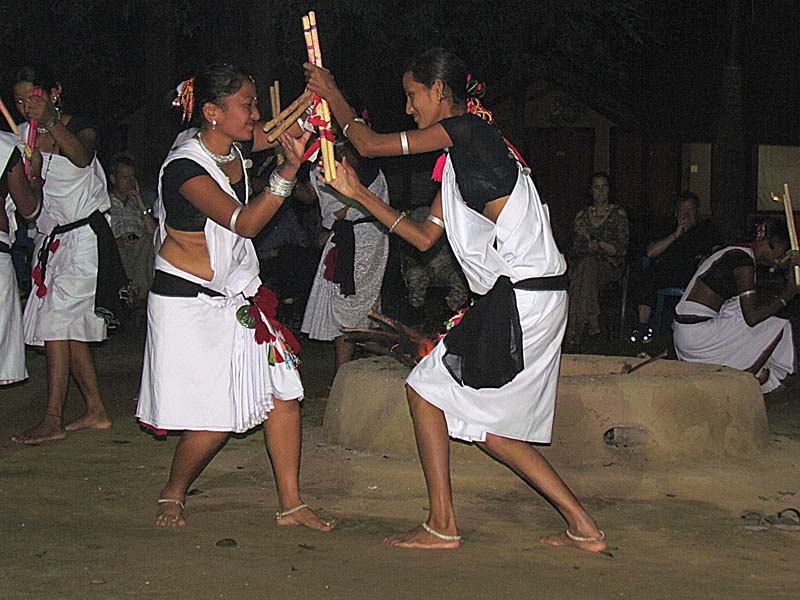
The final night in Chitwan, local Nepalese dancers performed outside at the lodge. One of many festivals was being celebrated.
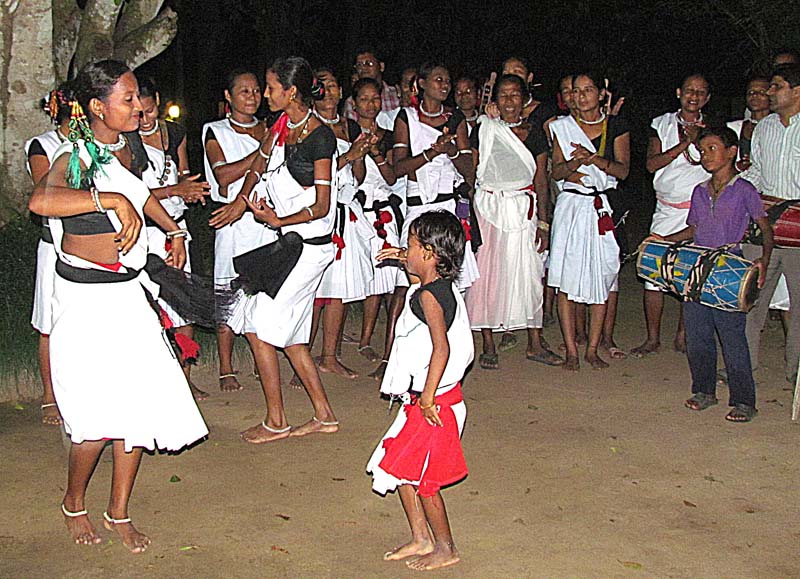
Among the dancers was this very young girl.
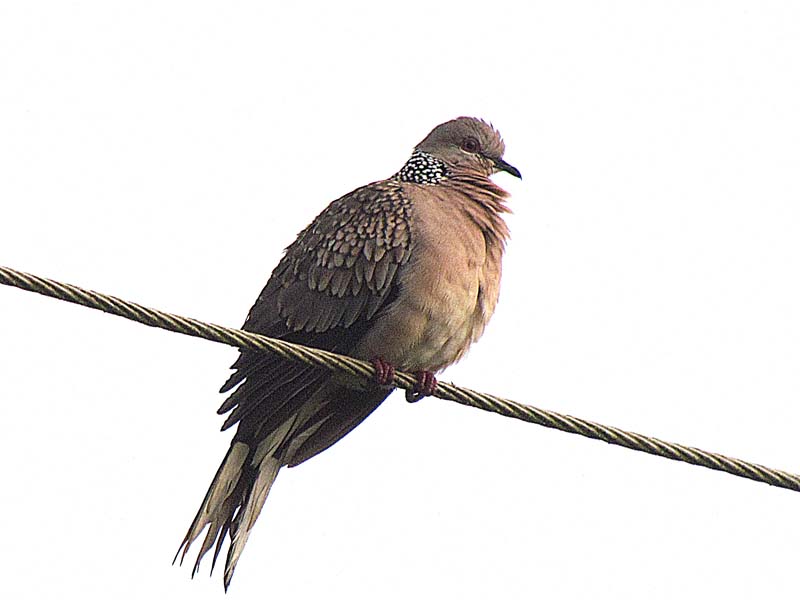
The morning that we left the area to fly to Kathmandu, a few of us went on an unscheduled bird walk and saw some unusual birds.
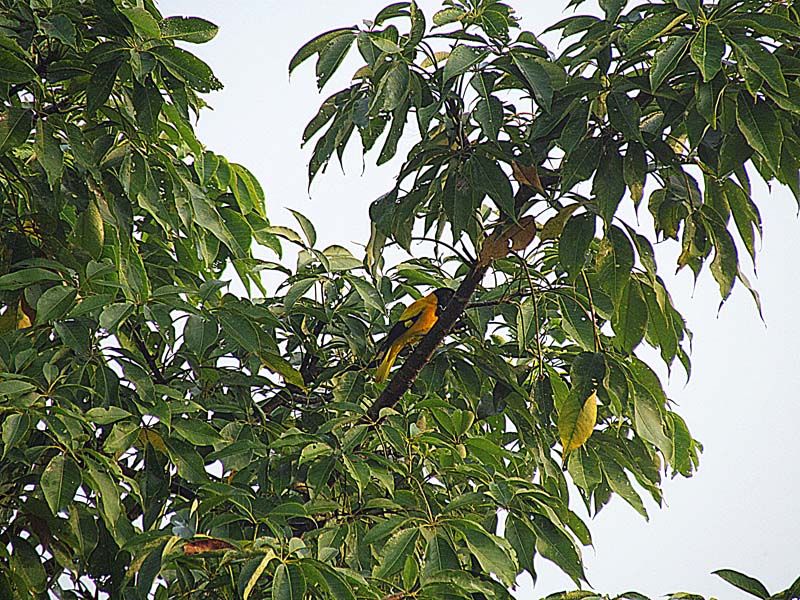
Some kind of oriole.
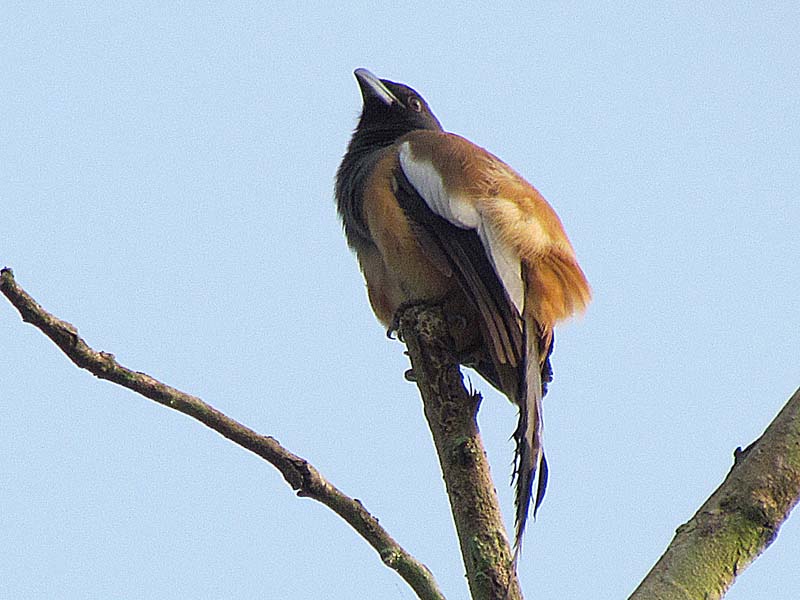
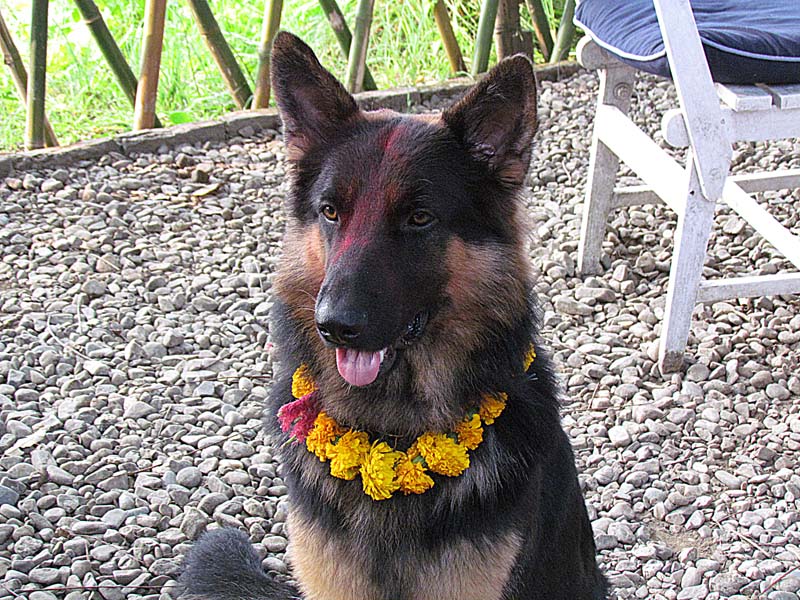
The lodge owner's German Shepherd. This day was the occasion of a festival honoring dogs, so he was dressed up for the occasion.
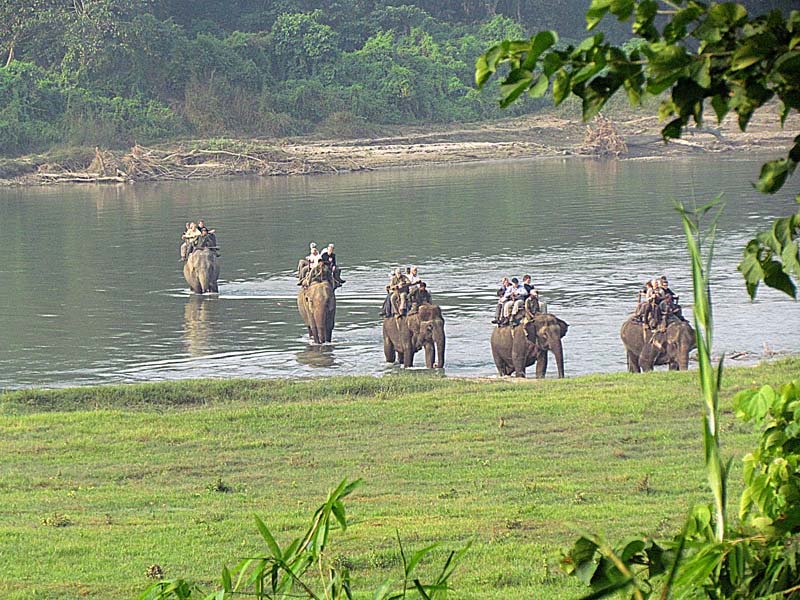
Another group returning from an early morning elephant safari.
We were having breakfast on the veranda before leaving.
Link to Page Eleven of Nepal - Back in Kathmandu
Link to Page One of Nepal
Pat's Home Page